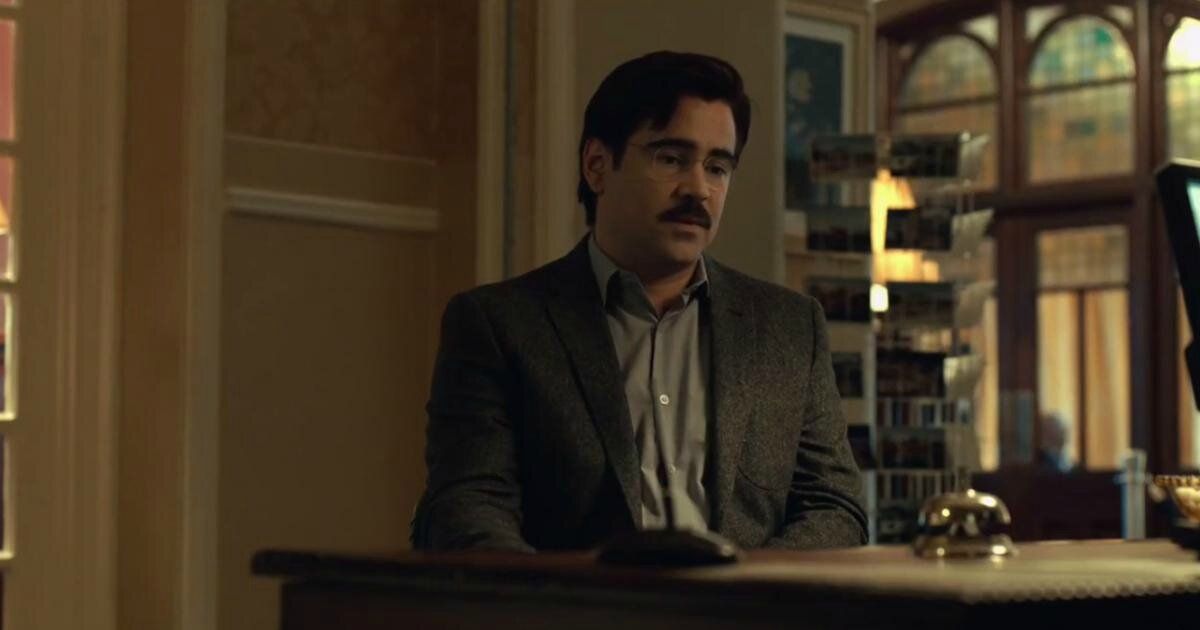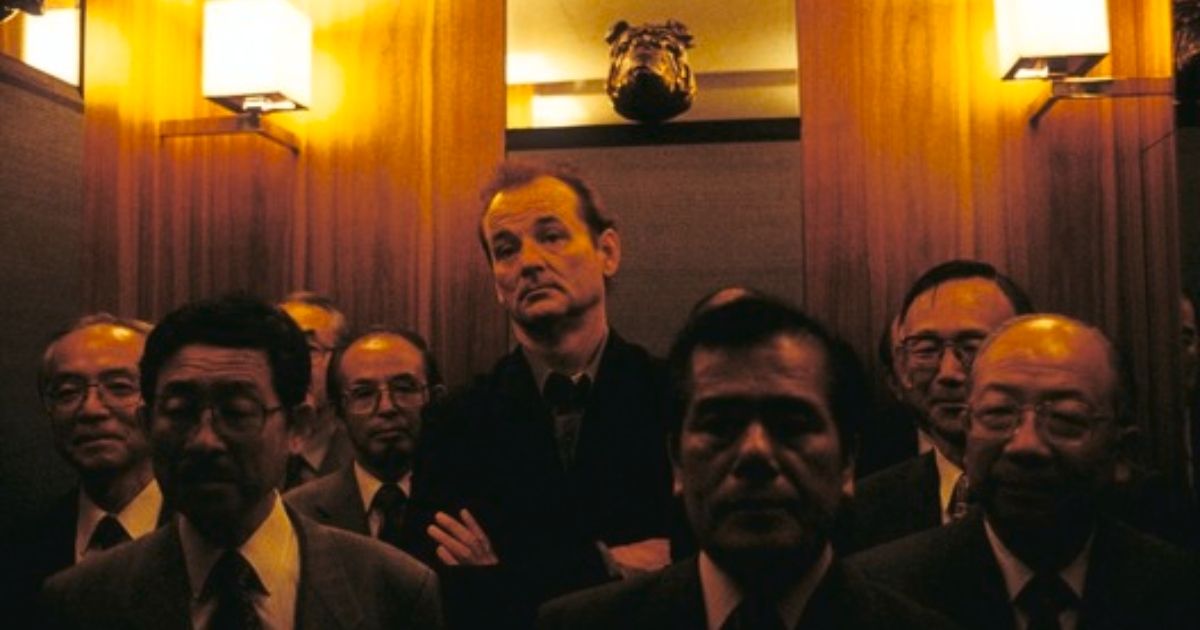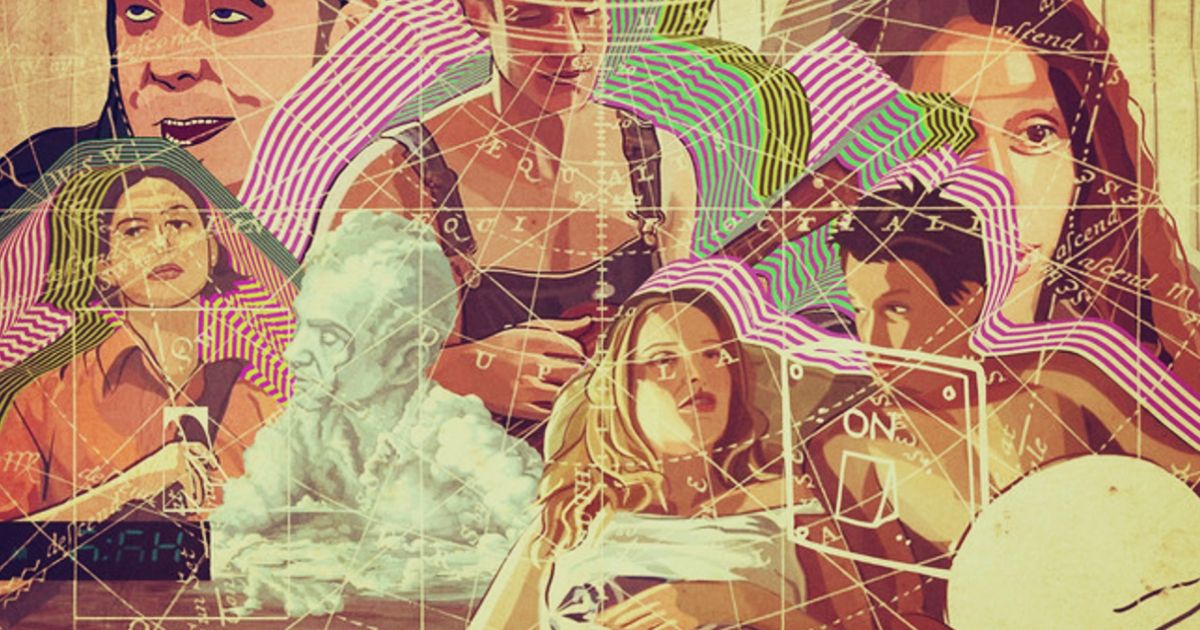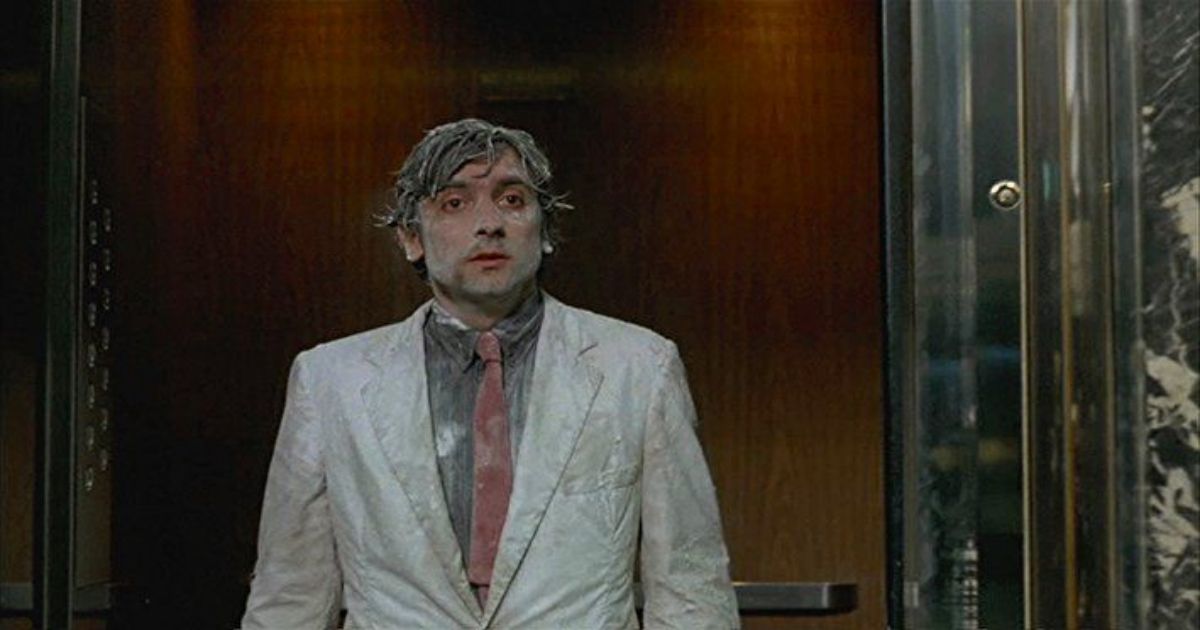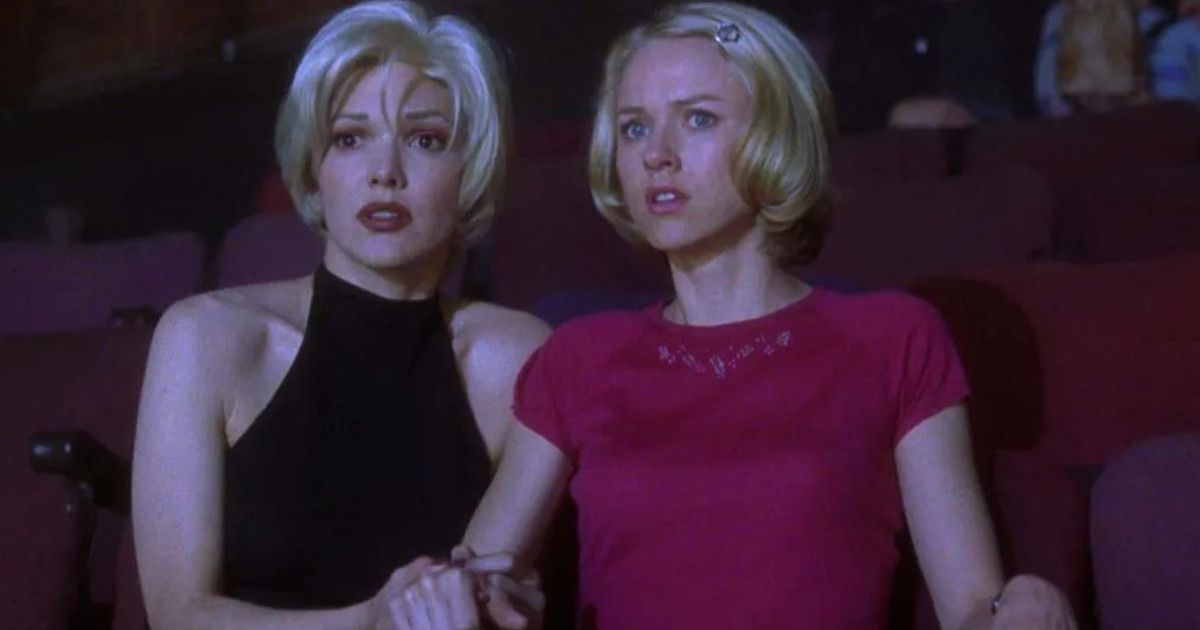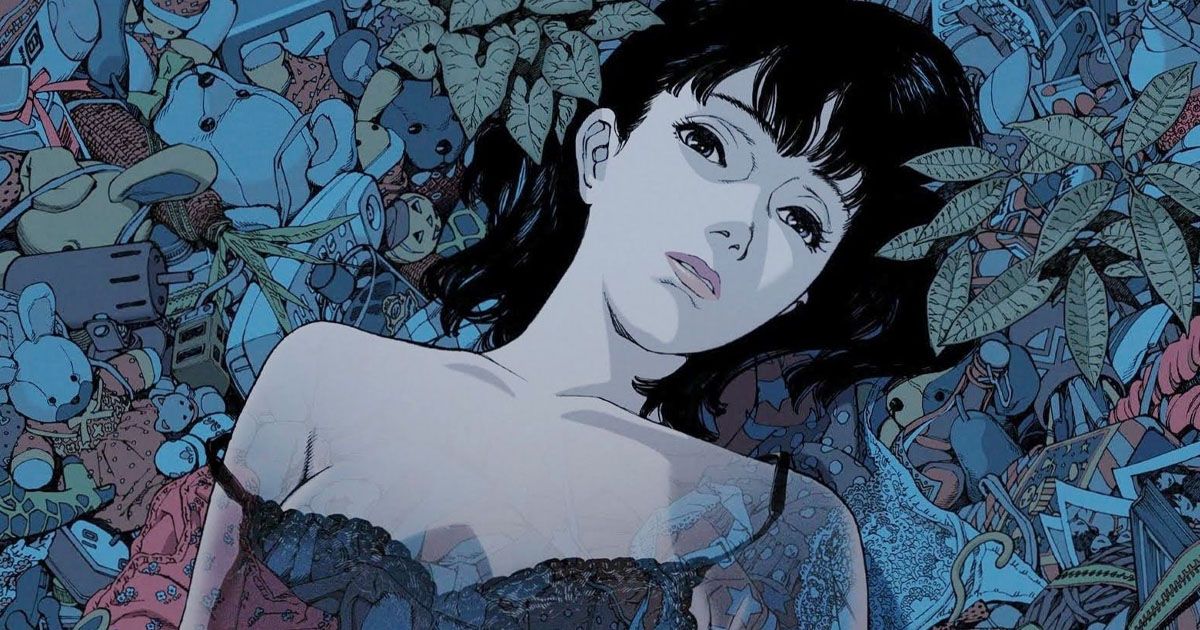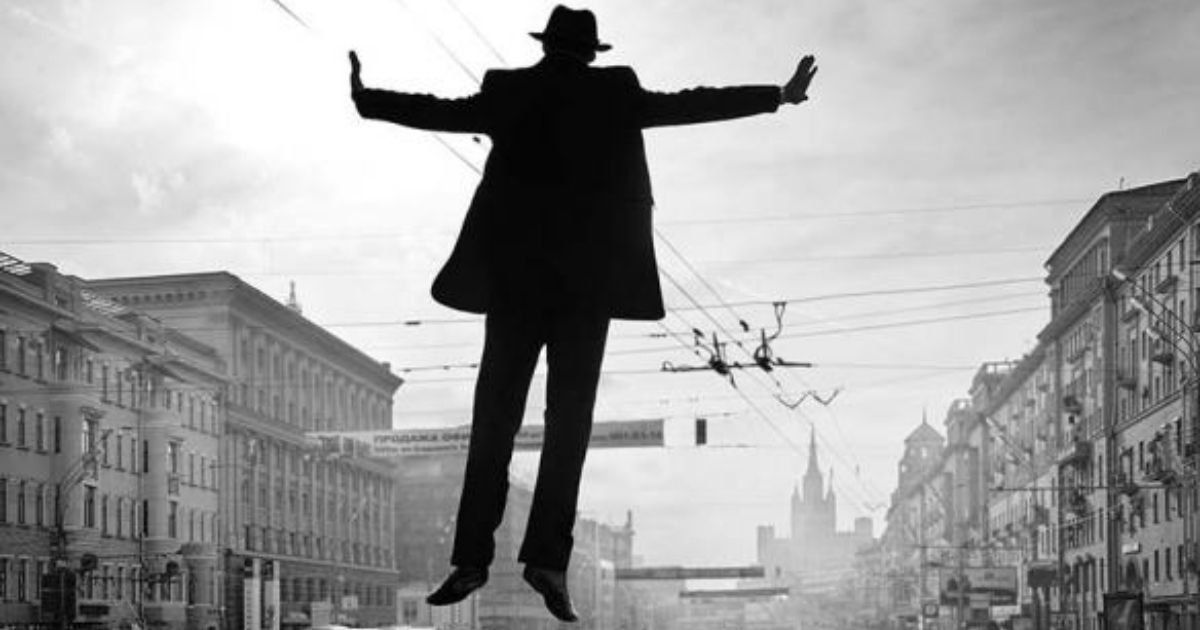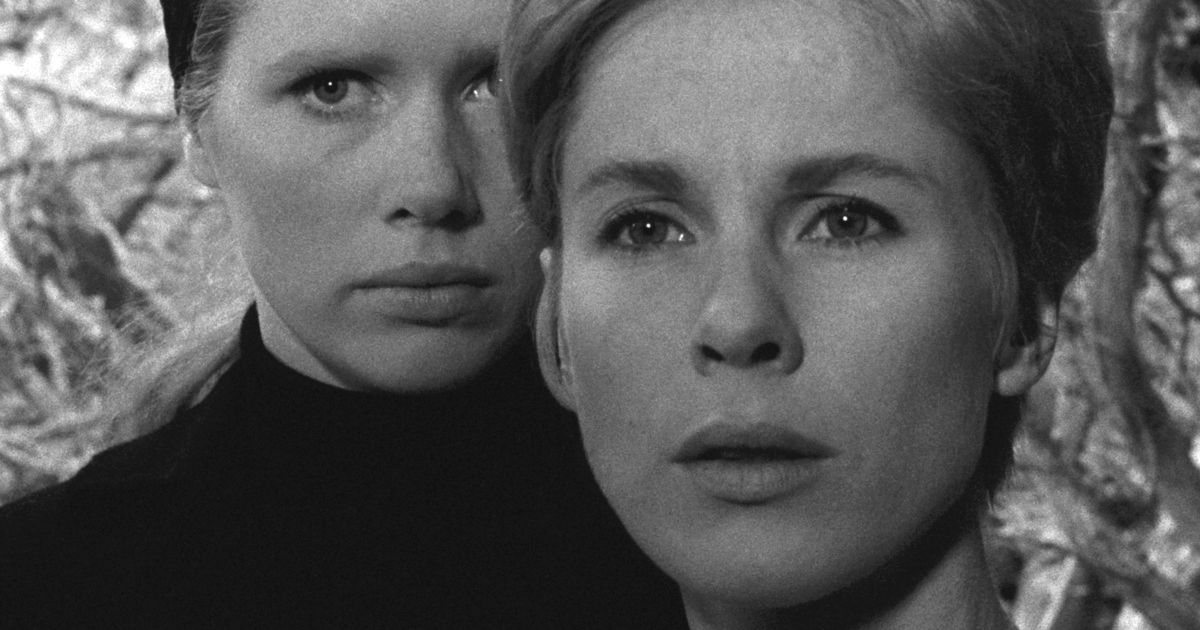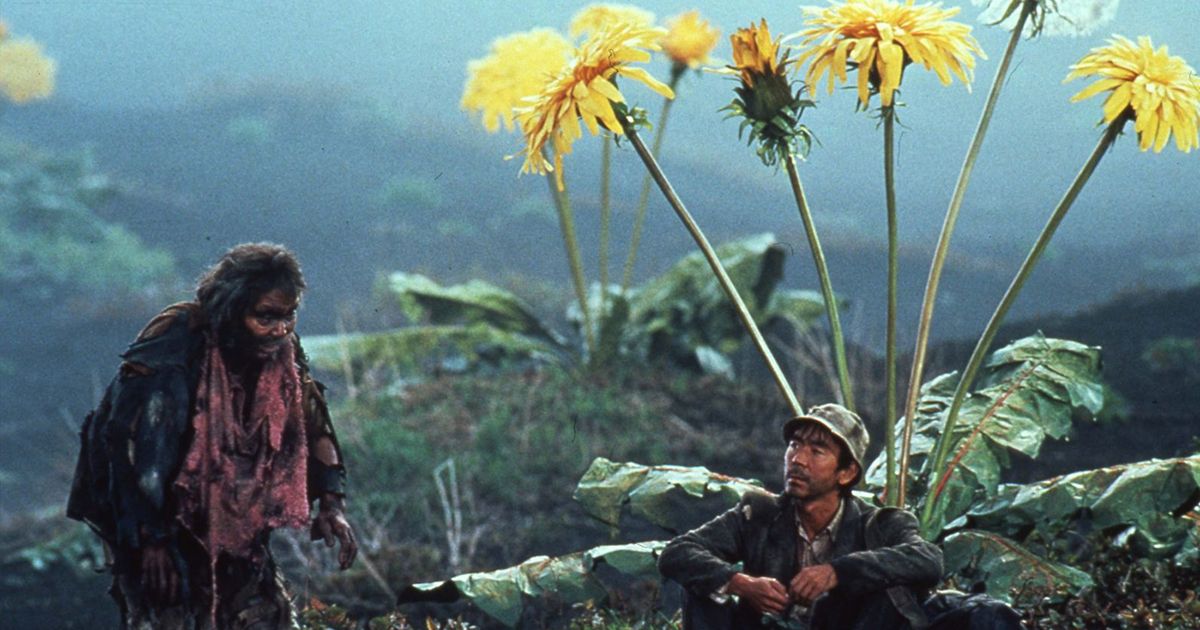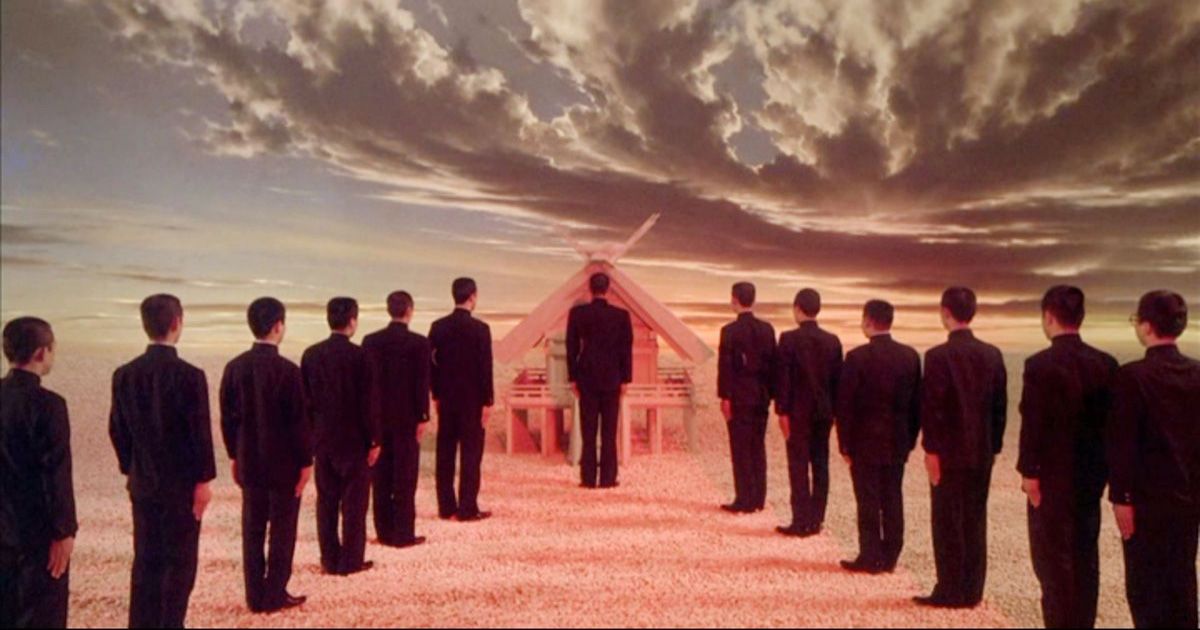Cinema has the power to transport us to different worlds, evoke emotions, and challenge our perceptions. Some films, with their surreal narratives and dreamlike aesthetics, blur the line between reality and fantasy. Here are 15 movies that feel like dreams, each unique in its approach to storytelling and visual style. These films often draw upon elements of magical realism, utilizing both an artistic and unconventional approach to foster a sense of wonderment in the audience. The intricate storylines and stunning visuals engage the viewers' imaginations while challenging traditional filmmaking paradigms.
Directors often employ innovative techniques in order to create immersive experiences that connect deeply with audiences. These dreamlike films can serve as thought-provoking and engaging pieces of art while also providing commentary on cultural, spiritual, or existential topics. With their ability to tap into universal themes and emotions, these movies hold a special place within the hearts of cinephiles and casual viewers alike.
Weaving together fantastical elements with relatable human experiences, these 15 movies offer exceptional opportunities for reflection and introspection as they take the viewer on an unforgettable journey through ethereal landscapes.
15 Lost In Translation (2003)
As one watches Sofia Coppola's Lost In Translation, they feel like they’re wandering through Tokyo's neon-lit nightscape, exploring the depths of loneliness and connection. As Bill Murray and Scarlett Johansson portray the protagonists, the disorienting effect of culture shock amplifies the dreamlike quality of the film. Like a dream, their intense yet ephemeral connection flits by. The viewer is immersed in the characters' struggles to find meaning and solace in an unfamiliar environment, which only heightens their shared sense of isolation. While navigating the vibrant city together, they discover a mutual understanding of each other amidst language barriers and cultural differences.
The movie skillfully captures the transient beauty of unexpected encounters, as two lost souls find solace in one another during their brief time in Tokyo. The film's atmospheric visuals, combined with its evocative soundtrack, create a vivid sensory experience that transports the audience directly into this disorienting world. Throughout their journey, Murray's and Johansson's characters develop a bond that transcends age and background, reminding viewers of the power of human connection even in this vast modern metropolis.
As their stories intertwine, the protagonists grapple with their own internal conflicts, which are subtly depicted through nuanced performances by both actors. In the end, Lost In Translation leaves viewers with a poignant reminder of the fleeting nature of human connections and experiences—suggesting that sometimes life's most meaningful moments are found in those ephemeral encounters that imprint themselves on our hearts forever.
14 Eternal Sunshine of the Spotless Mind (2004)
Take a wild ride through the mind of a man determined to erase memories of a failed relationship in Michel Gondry's surreal film, Eternal Sunshine of the Spotless Mind. As the film unfolds, its non-linear narrative and visually stunning memory sequences take the audience on a journey through a dreamlike atmosphere. The chaos and unpredictability of human emotions are mirrored in this experience.
Throughout the movie, viewers are immersed in the protagonist's inner struggles, witnessing firsthand his desperate attempt to let go of a love gone awry. Gondry masterfully utilizes inventive cinematic techniques to emphasize the disarray of emotions and highlight the complexities of erasing treasured memories. The talented cast, led by Jim Carrey and Kate Winslet, provides an emotional depth that resonates with the audience long after they have watched the film. The powerful script highlights not only the distressing aspects of memory manipulation, but also questions whether one can truly escape from past emotions and attachments.
Jim Carrey even spoke up about not liking the set of the film due to the nature of how it was set up against him. Ultimately, Eternal Sunshine of the Spotless Mind'serves as an evocative exploration of love, loss, and human connection - leaving viewers with a profound sense of reflection on their own relationships and emotional histories.
13 Waking Life (2001)
Waking Life by Richard Linklater takes us on a journey through the philosophical depths of reality, dreams, and consciousness. As viewers delve into the film's rotoscope animation style and episodic narrative structure, they are transported into a dreamlike world that challenges their understanding of what is real. Through engaging conversations with various intriguing characters, the protagonist begins to question the nature of existence and the limitations placed upon it by human perception. As the dream sequences become increasingly surreal and thought-provoking, audiences are invited to contemplate the profound connection between our everyday lives and the transcendent realm of dreams.
By exploring complex themes such as free will, personal identity, and the purpose of life itself, Linklater's masterpiece compels viewers to reevaluate their beliefs on these subjects and foster a deeper appreciation for the enigmatic forces that govern our universe. The film skillfully interweaves art, philosophy, and science in a manner that not only stimulates intellectual curiosity but also evokes a sense of wonderment and awe at the vastness of human experience.
As we accompany the protagonist on his unforgettable odyssey through a dreamscape rife with symbolism and insight, one cannot help but feel profoundly moved by this remarkable work of art that speaks to both our shared human condition and our unique individual journeys. Waking Life ultimately serves as an exquisite reminder that our existence transcends mere physical boundaries and encourages us to embrace the infinite possibilities that lie within our own minds and hearts—to awaken our divine potential and immerse ourselves in the boundless realm of imagination.
12 After Hours (1985)
Through New York City's nocturnal underworld, Martin Scorsese's After Hours takes the audience on a darkly comedic odyssey that remains one of a kind. As the film progresses, its surreal encounters and absurdity intensify, creating a sensation of being trapped in a strange and unsettling dream. The protagonist's descent into this bewildering realm captivates viewers, who can't help but feel both trepidation and an irresistible urge to explore its eerie depths further. Layers of ambiguity and interpretation are peeled away as characters appear and disappear, momentarily entering the protagonist's life before vanishing into the shadows, leaving remnants of their influence behind.
Masterfully set against the sprawling backdrop of the city that never sleeps, After Hours skillfully merges elements of black comedy with profound existential inquiries – forcing spectators to confront questions about fate, chance, and human connection amidst the chaos. Each twist and turn in this enthralling narrative invites introspection, urging audiences to examine their understanding of reality versus illusion. The film's ability to transport viewers into an alternate world where rules no longer apply has cemented its status as a generationally moving piece – one that will continue to compel reflection and spark conversation for years to come. Immersing themselves in Scorsese's otherworldly vision through "After Hours," audience members are given a unique opportunity to grapple with life's complexities and uncertainties from a fresh perspective.
Intriguingly blending apprehension with amusement, vulnerability with resilience, and lightness with darkness, After Hours ultimately leaves viewers pondering some of life's most pressing quandaries while simultaneously reflecting on the unexpected nature of existence itself.
11 Paprika (2006)
Venturing into the realm of dreams, Satoshi Kon's Paprika is an anime that captivates with its breathtaking visuals, allowing for viewers to transcend their own cognitive boundaries and explore abstract spheres of perception. As the audience watches the film, it will feel like they’re floating through a hazy dream world where reality and the subconscious blend together, creating an ethereal alternate universe in which one can dwell and question the limits of their own psyche. The intricate storyline serves as a thought-provoking enigma, embracing the unconventional and driving viewers to ponder the complexities of human cognition.
The surreal visuals, brought to life through masterful animation, will keep the audience on their toes as they traverse this cinematically vivacious labyrinth, with color and movement expertly intertwining to create a mesmerizing tapestry never quite sure what's real and what's not. Furthermore, 'Paprika' poses pertinent questions about self-identity, mental health, and even societal norms, making this anime a generationally moving piece for readers and viewers alike to ponder upon long after they've witnessed its enchanting enigmas.
Through this astounding work of art, one not only marvels at the spectacle of Satoshi Kon's otherworldly creation, but also embarks on an introspective journey examining the relationship between mankind's fascination with dreams and our fragile grasp on reality. It is now taking a leap into the realm of episodic stories with a series directed by Cathy Yan.
10 Looper (2012)
Looper by Rian Johnson bends the rules of reality with its time-travel thriller plot, merging the boundaries between past, present, and future in an awe-inspiring manner. The dystopian future setting and intricate storyline create a disorienting, dreamlike effect that challenges viewers' perceptions, making them question the nature of time and their own existence within it. As the multi-layered narrative unfolds, audiences are treated to a dynamic exploration of themes such as destiny, sacrifice, and the consequences of our choices as they ripple through time. This cinematic masterpiece stands as a testament not only to the imaginative power of storytelling, but also to the human spirit's relentless pursuit for understanding our complex world.
In navigating its labyrinthine tale, Looper captivates viewers by inviting them to ponder upon profound philosophical questions that resonates across generational lines, all while immersing in an engrossing spectacle of thought-provoking visuals and heart-stopping action sequences. The film ultimately leaves an indelible impact on those who experience it – a timeless masterstroke that continues to inspire and provoke discussions about the endless possibilities that lie beyond the constraints of our perceived reality.
9 Mulholland Drive (2001)
Mulholland Drive by David Lynch is a cinematic journey through a dreamlike world. The film's haunting, dreamlike experience lingers long after it ends, thanks to its labyrinthine narrative, surreal imagery, and unsettling atmosphere that seem to move and shift like a maze. As viewers traverse this enigmatic landscape, they are confronted with provocative questions about the nature of reality, desire, and the dark underbelly of ambition. The seemingly disconnected plot lines unravel into a tapestry of intertwined stories that intentionally defy simplistic explanations, leaving ample room for interpretation and sparking multiple trips through its entrancing corridors.
Throughout the film, characters grapple with their own identities—a constant reminder of the thin line between who we are and who we aspire to be. These existential themes evoke deep introspection in viewers as they delve into their own thoughts and experiences. Moreover, Lynch masterfully employs an otherworldly soundtrack that enhances the overall ethereal atmosphere, amplifying the emotional impact of each scene. Mulholland Drive transcends traditional boundaries of filmmaking, creating a mesmerizing piece of art that invites generation after generation to ponder upon the complexities hidden within both the film and their own lives. As time goes on, its powerful effect only grows stronger, solidifying its place in the annals of cinematic history as a thought-provoking masterpiece.
8 Perfect Blue (1998)
Perfect Blue, a masterpiece by Satoshi Kon, takes the audience on a psychological thriller journey that delves into the sinister aspects of fame. The disorienting narrative and disturbing imagery create a nightmarish, dreamlike quality that moves the reader through a surreal experience. As the protagonist grapples with the perils of her newfound celebrity status, viewers are invited to ponder the rippling effects of this twisted reality in which identity and sanity constantly intertwine. The film masterfully manipulates its audience, causing them to question their own perceptions and assumptions, just as its characters do. Furthermore, Kon's visionary storytelling challenges societal norms and expectations of fame, making Perfect Blue a piece of work that will continue to resonate with future generations.
In addition to its haunting visuals, Perfect Blue boasts an exceptional soundscape that heightens the atmosphere of suspense and unease. As each layer of the protagonist's psyche unfolds, viewers find themselves empathizing with her struggle to maintain control over her own life and destiny. The film's commentary on mental health serves as a timeless reminder that not everything is as it seems when looking at someone else's life. Kon's artful direction ensures that despite the complexity of the narrative, audiences never lose sight of the thematic undercurrents driving each twist and turn.
With each passing scene, the lines between fantasy and reality blur until reaching a fever pitch in a harrowing climax that is sure to linger in the minds of anyone who witnesses it. Ultimately, Perfect Blue is a powerful testament to Satoshi Kon's brilliant mind and serves as an unforgettable exploration of the dark corners of human nature lurking beneath the glittering veneer of stardom.
7 Climax (2018)
In Climax, visionary filmmaker Gaspar Noé takes the audience on a surreal, hallucinatory journey into madness that transcends time and space. This extraordinary experience unfolds within the confines of a single location, stripping away all distractions and focusing attention solely on the dynamics at play among its inhabitants. The hypnotic dance sequences expertly woven into the story serve as both captivating visual spectacles and metaphorical representations of the characters' descent into chaos. As the intensity of their shared psychosis escalates, the dreamlike atmosphere becomes increasingly nightmarish, enveloping viewers in a hypnotic trance that dares them to question their perception of reality.
At once haunting and compelling, Climax is a cinematic tour de force that seamlessly blends visceral sensations with profound psychological exploration. By meticulously examining the fragile boundaries separating sanity from madness, Noé crafts an unforgettable, generationally moving piece that will leave audiences pondering its implications long after they have left the theater.
This cinematic masterpiece challenges viewers to confront the depths of human depravity and vulnerability, while illuminating the haunting beauty of our eternal struggle to remain grounded amidst our darkest fears. As audiences continue to dissect and engage with this captivating work of art, Climax proves that profound storytelling through film possesses an enduring power unlike any other medium.
6 8 1/2 (1963)
Federico Fellini's 8 1/2 takes the audience on a surreal journey through a director's creative crisis, exploring the complexities of artistic expression and the human psyche. The dream sequences and non-linear narrative create a dreamlike quality that mirrors the protagonist's inner turmoil, as he grapples with his past, present, and future, resulting in a thought-provoking experience for viewers. The masterful blend of fantasy and reality sheds light on the universal struggle between artistic vision and life's practicalities, resonating with audiences across generations.
As the protagonist delves deeper into his subconscious, we are invited to reflect on our own experiences and emotions, illustrating the powerful impact of cinema as a medium for self-discovery. Indeed, Fellini's timeless masterpiece has left an indelible mark on the history of film, inspiring countless filmmakers in its wake and serving as a poignant reminder of the transcendent nature of storytelling.
5 The Lobster (2015)
Yorgos Lanthimos' The Lobster is a dystopian love story set in a world where single people are turned into animals. It's been named one of the best directorial debuts from an international director ever. Its absurd premise and deadpan humor create a dreamlike, surreal atmosphere. This thought-provoking film amplifies the existential question of what it means to be human and the role of relationships in our lives by showcasing the unique societal structure in which companionship has become a mandate to survive. The characters are faced with the dilemma of finding genuine connections amidst this coercion, creating an allegory that reflects on the modern struggle to find authenticity in romantic relationships.
The film's dry wit serves as both comic relief and a commentary on societal expectations, challenging viewers to deeply scrutinize their own values and beliefs about dating and personal identity. As the protagonist navigates through this intricate world, audiences feel both sympathy and curiosity for his choices and search for validation. Lanthimos masterfully explores themes such as loneliness, sacrifice, and desperation, drawing parallels between this dystopian reality and contemporary pressures around love and partnerships. The Lobster has effectively become a generational milestone that lingers in viewers' minds long after its conclusion, urging them to ponder over the true essence of human connectedness and identity within the grander scheme of existence.
4 Persona (1966)
Persona, a psychological drama directed by the visionary Swedish filmmaker Ingmar Bergman, delves deeply into the complex and intriguing themes of identity, self-discovery, and the profound human need for connection. The abstract narrative unfolds gracefully as layers of intensely introspective dialogue are accompanied by striking visuals, crafting a dreamlike atmosphere that invites the audience to embark upon their own journey of self-exploration. One scene seamlessly transitions to the next as viewers are presented with surreal juxtapositions, invoking contemplation that transcends cultural boundaries and stimulates transcendent introspection.
Throughout this thought-provoking film, the intricate interplay between the characters is portrayed with such authenticity that it serves as a catalyst for viewers to reflect upon their own relationships and ideals about personal connections. The stark black-and-white imagery enhances its emotional depth and impact on audiences, captivating them through a meaningful immersion into uncharted philosophical territory. As Persona reaches its poignant conclusion, both the characters and viewers are left with lingering questions about the true nature of identity and human connection - a thought-provoking entreaty for endless discourse across generations.
3 Dreams (1990)
Akira Kurosawa's Dreams is a collection of visually stunning vignettes based on the director's own dreams. Its episodic structure and surreal imagery create a dreamlike, meditative experience. Each segment within the anthology delves into the human psyche, exploring themes of life, death, and spirituality while presenting multidimensional characters that resonate deeply with audiences of all generations. Kurosawa masterfully weaves a tapestry of emotion and wonderment in each scene, transporting viewers into the enchanting world of his imagination.
Throughout the film, the viewer is granted intimate access to Kurosawa's most private reveries - both whimsical and somber - which serve as a profound reflection on the complexities of existence. Harnessing the power of visual storytelling, the director transcends cultural boundaries to evoke an emotional response that speaks to a universal human experience. By sharing his personal dreamscape with the world, Kurosawa not only solidified his status as a master filmmaker, but also invited us to ponder the very essence of what it means to be alive.
As each vignette unfolds, every frame is imbued with a sense of wonder and boundless creativity that challenges conventional thinking and encourages introspection. The emotive force behind Dreams is eloquently captured through poignant performances and cinematography that transports viewers through multiple layers of reality. Indeed, Akira Kurosawa's Dreams stands as an enduring testament to the power of cinema as a dynamic force for inspiring profound contemplation among those who experience its breathtaking brilliance.
2 Mishima: A Life in Four Chapters (1985)
Mishima: A Life in Four Chapters, directed by Paul Schrader, follows the life of the provocative Japanese writer Yukio Mishima in a stylized biographical film. The theatrical staging and non-linear narrative of the performance create a dreamlike and introspective atmosphere. Schrader expertly weaves together scenes from Mishima's life, revealing the complex layers of his identity as both an esteemed literary figure and a man conflicted with his own desires and societal expectations. As audiences delve into this captivating odyssey, they are offered glimpses into the core essence of human vulnerability—where artistry meets personal struggle.
The film challenges its viewers to confront the dual nature of genius and madness, exposing the intimate space where creation and destruction intertwine, allowing us to ponder the weight of one's legacy. Through this exploration, Mishima: A Life in Four Chapters becomes more than just a recounting of a writer's life—it transcends into a profound reflection on our own journey to fulfill our innate potential amidst societal constraints. As a generationally moving piece, it enables readers to consider both their personal quests for self-expression and the universal struggle for absolute freedom.
In their contemplation, audiences find themselves utterly immersed in an evocative world that questions conventional norms while celebrating the human spirit's resilience. By delving deeper into Mishima's controversial existence built upon art, politics, and sexuality, Schrader invites us all to examine our own complexities through an unapologetic lens. Ultimately, Mishima: A Life in Four Chapters underscores the transformative power of storytelling and encourages us to approach our lives with fearless curiosity and vulnerability, ensuring that its impact resonates throughout generations to come.
1 Mirror (1975)
MIRROR by Andrei Tarkovsky takes the audience on a poetic journey through memory and time. The non-linear narrative, haunting imagery, and introspective tone of the work create a dreamlike and meditative experience for the viewer. Each frame serves as a doorway into the depths of human emotion, masterfully revealing the intricate connections between past, present, and future. As both the characters and audience delve deeper into this intricately woven tapestry of experiences, it becomes evident that each seemingly discrete moment holds profound significance to our understanding of existence.
This exceptional film deftly transcends time, making it a generationally moving piece that invites viewers from all walks of life to contemplate their own place within the vast expanse of memory. By examining the many layers of connection between individual lives and universal themes, Tarkovsky's heartfelt masterpiece poses poignant questions about love, loss, and the nature of identity itself. As we follow these characters on their surreal journey through moments both mundane and extraordinary, we are reminded of our shared humanity and compelled to ponder life's inescapable truths. Ultimately, MIRROR grants us a rare glimpse into the heart and soul, offering a remarkable opportunity for self-reflection that has left countless viewers forever changed. In this way, Andrei Tarkovsky's visionary work continues to captivate audience members across generations as they journey alongside these unforgettable characters through the mesmerizing landscape of human memory.
These films move with dreamlike narratives and aesthetics, challenging the audience's perceptions and inviting them to question the nature of reality. The statement reminds one that cinema, akin to dreams, has the potential to reflect their profound fears, desires, and existential inquiries. Through the subtle blending of visual and audio elements, these films create a rich tapestry that leaves viewers captivated by the world presented before them. They evoke a sense of wonder and intrigue, propelling audiences to explore the depths of their emotions and thoughts as they become immersed in these surreal cinematic experiences.
As stories unfold on screen, viewers are given glimpses into alternate realities that simultaneously mirror and distort their own lives, compelling them to confront their preconceived notions and beliefs in order to fully embrace the narrative's complexities. This transformative power of cinema not only entertains, but also unites generations through shared experiences of awe and introspection. Each frame is artfully crafted to spark conversation and debate amongst audiences, ensuring that these films will continue to resonate with viewers long after the credits have rolled. By pushing boundaries and presenting alternative perspectives, these motion pictures transcend time and space to become truly generational pieces that speak volumes about both individual experience and universal human connections. In doing so, they leave an indelible mark on society by serving as poignant reminders of our capacity for self-reflection and exploration through the medium of film.

